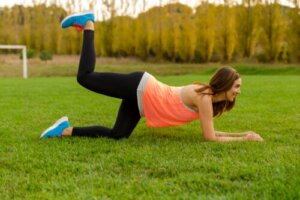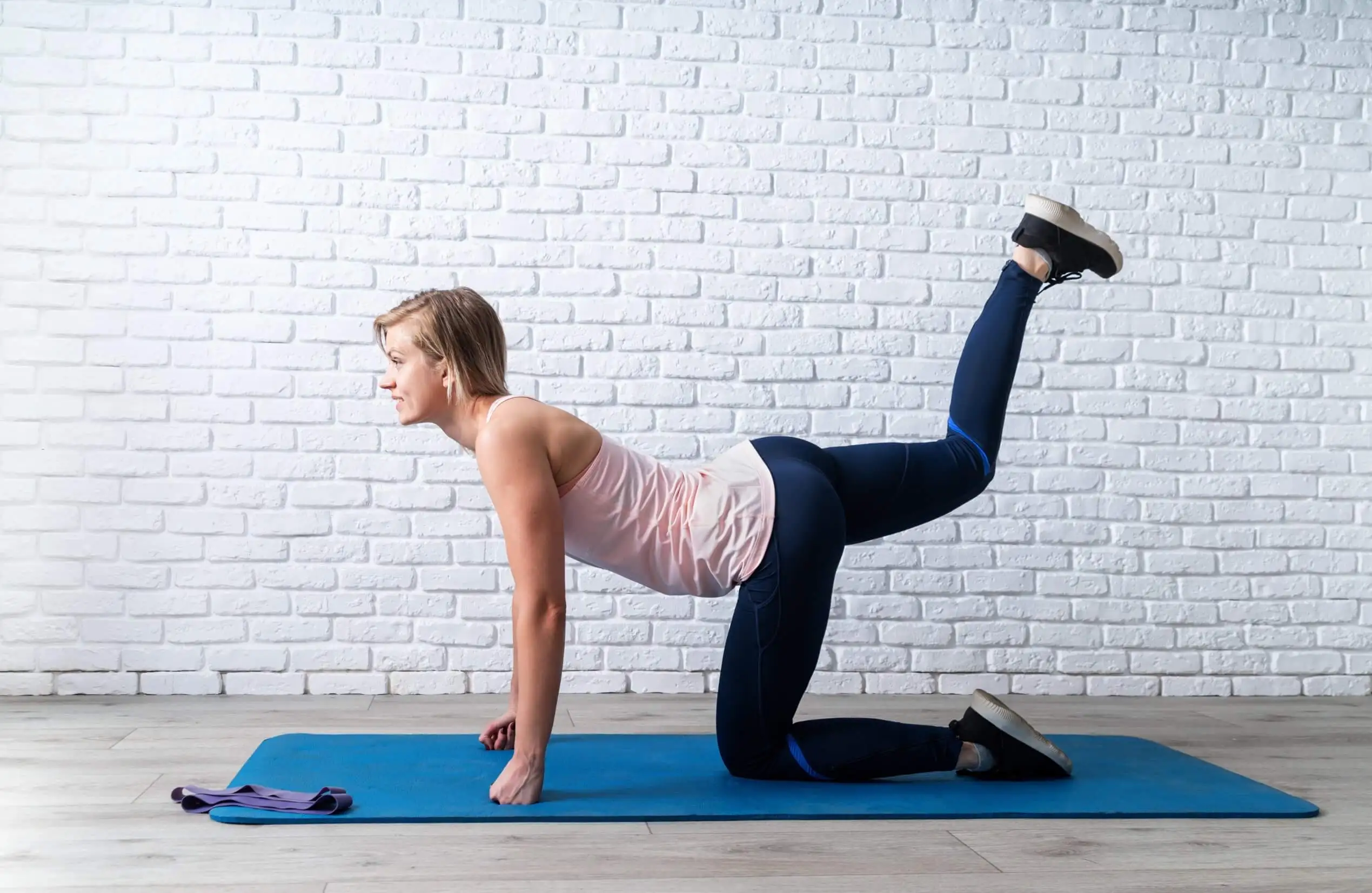5 Donkey Kick Mistakes that Keep You From Strengthening Your Glutes


Reviewed and approved by the doctor Leonardo Biolatto
There are many routines available if you’ve decided to strengthen your gluteal area. In this article, we’re going to delve into one of those possible exercises and show you the mistakes when doing the donkey kick.
The gluteal muscle group is one of the most trained parts of the body. It’s related to better physical appearance, but it’s also important for gait and posture.
The glutes are made up of three structures:
- The Gluteus maximus, which occupies the central part and the largest surface of the buttock.
- The Gluteus medius, located on the sides.
- The Gluteus minimus, which is the smallest muscle, is located between the femur and the hip bone.
The donkey kick is a very powerful exercise for you to obtain muscle tone, power, and strength in this area. It’s characterized by the simplicity of its steps, but if you don’t pay proper attention to its movements, you will involve the wrong muscles.
The correct technique for performing the donkey kick
Start by lying on the floor, face down on all fours. Your wrists should be at a lower level than your shoulders and your knees lower than your hips.
Your knees should be bent, touching the floor and at a 90° angle to your legs. In this way, start squeezing your glutes so that you lift either foot skyward, looking to bring the foot as high as you can. Here you keep your back straight and the core of your body tight.
Finally, as you raise your leg behind you and towards the ceiling, you begin to descend slowly and control your breathing, so as not to accelerate the return. You can perform as many repetitions as recommended with the same leg.
Then, you repeat the movement with the other limb. Keep in mind that you can add weight or some kind of dumbbell to your ankles to increase the degree of difficulty and power to a higher level.

The most common mistakes when performing the donkey kick
This kick can be performed in many ways. The simplest is without extra weight, but there are also variations on gym machines and even with a weight attached to your ankle.
Therefore, our goal is to teach you the mistakes when doing donkey kicks that will prevent you from strengthening your glutes. If the purpose of this routine is to strengthen the muscle, it makes no sense that for a poorly executed movement, you put your well-being at risk.
We think you may also enjoy reading this article: 11 Exercises that Keep Cindy Crawford Looking Young at 57 Years Old
1. Holding your breath
Don’t forget to breathe correctly, little by little and without haste, to keep your abdomen contracted and your back straight. Breathe during the exercise with your core activated to keep your central core strength in the best condition.
You should concentrate on your breathing during each step. If you hold your breath to activate your core, you can cause lower back pain or even failure.
2. Donkey kick mistakes: Not activating your core
It’s important that you activate your core and abdominal muscles when performing the donkey kick. If you don’t, you can destabilize your spinal and pelvic area.
Your body must be aligned and stable. Before performing the kick, you must keep your core active by connecting it with your breathing.
3. Not taking advantage of tools to improve your technique
To help you, you can hold any flat, plank-shaped object against your back.
Your shoulders may slump and tend to slump forward as the effort fatigues you. If you round your upper body, you impede shoulder stability and, as a result, adopt poor posture.
4. Donkey kick mistakes: Kicking too low or too high
This can cause the glutes to not extend or exercise in the most effective way. If you kick too low, your glutes won’t work hard enough.
If you kick too high, you’re putting more stress on your lower back. This is not the goal of the routine and can lead to injury. Doing your best doesn’t mean you have to overextend the muscles.
We think you may be interested in reading this, too: Pedro Pascal and His Exercise Routine to Stay in Shape in “The Last of Us”
5. Apply the momentum rather than the muscle
Remember that the gluteal musculature is the one that needs to work. If you give it enough time to do so, it will.
When lifting or lowering your leg, do it slowly, so the momentum won’t consume the exercise. Practice in a different way, understanding that the intention to lift your leg with the strength of your muscles is better than performing it with the natural impulse to accomplish the movement.

Recommendations to avoid mistakes when doing the donkey kick
First, keep in mind that it’s the gluteal muscles that you will be working on in this activity. So any other posture that overtaxes other areas needs to be corrected. Learning to isolate these muscles can only be achieved with concentration and patience, as well as prior knowledge of the technique.
To achieve proper alignment of your arms, make sure your elbows are positioned under your shoulders. The fingertips of both hands should be extended, as there should be no excessive tension there. It may help to press the floor to gain more stability.
Finally, don’t look at something that may distract you and cause you to lose focus while doing donkey kicks. Also, try to maintain a neutral cervical spine, with your gaze fixed on the floor.
All cited sources were thoroughly reviewed by our team to ensure their quality, reliability, currency, and validity. The bibliography of this article was considered reliable and of academic or scientific accuracy.
- Gretchen O, Wendi W, Hillary P. Activaciones musculares de glúteos medianos y escápulas en lanzadores de béisbol juvenil. Revista de investigación de fuerza y acondicionamiento. 2015; 29 (6): 1494-1499.
- Arokoski J, Kankaanpaa M, Valta T, Jovonen I, Partanen J, Taimela S, Lindgren K, Airaksinen O. Función del músculo extensor de espalda y cadera durante los ejercicios terapéuticos. Archivos de medicina física y rehabilitación. 1999; 80 (7): 842-850.
- Houck J. Patrones de activación muscular de músculos seleccionados de las extremidades inferiores durante las tareas de paso y corte. Revista oficial de la Sociedad Internacional de Kinesiología. 2003; 13 (6): 545-554.
This text is provided for informational purposes only and does not replace consultation with a professional. If in doubt, consult your specialist.








